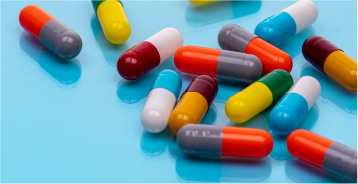The rise of antimicrobial resistance
 Medical Conditions
Medical Conditions
We need to process your personal information for you to interact with this website. We also use Cookies to enhance your experience. Please accept the Website Ts and Cs and Data Protection and Privacy Policy to fully access the website.
Pink eye, also known as conjunctivitis, is an eye infection that seems to be making its rounds once again, especially among families with children who attend school.
Though it may be irritating, pink eye is mostly harmless and rarely affects your vision. If it’s a viral or bacterial infection, it can be highly contagious, so it’s very important to look out for the symptoms and make sure that it’s treated correctly.
What is pink eye?
Pink eye is an inflammation (swelling) of your conjunctiva. The conjunctiva is the clear membrane (like a film) that covers the white part of your eyes and lines the inside of your eyelids. It helps to keep your eyes moist.
When the small blood vessels in the conjunctiva swell, they are more visible, which is why the white part of your eye may look pink or reddish when you have a pink eye infection.
You can get pink eye in one or both eyes.
Causes
The most common causes of pink eye are viral or bacterial infections, but allergies can also cause pink eye. Blocked or incompletely open tear ducts in babies may also cause pink eye.
Viral and bacterial pink eye infections are very contagious and can be spread through coughing, sneezing or touching.
Viral pink eye, or viral conjunctivitis, is most common. Those who have a common cold, flu, COVID-19 or other upper respiratory infection, may suffer from viral pink eye at the same time. It usually clears up within a week or two, but may take three weeks or more to heal.
The most common cause of bacterial pink eye is touching your eyes with unclean hands. It can get better within a week, but it can also take two weeks or more to clear up completely. Your doctor may prescribe antibiotics. Although rare, bacterial pink eye can cause serious eye damage if left untreated.
Allergy-related pink eye, or allergic conjunctivitis, is fortunately not contagious, but it can still be very irritating. Seasonal allergies (pollen and spores), dust, pet allergies (animal dander), contact lenses, cigarette smoke, shampoo, make-up and swimming pool chlorine may cause this type of pink eye.
Symptoms
Besides redness in one or both eyes, you may experience the following symptoms in the infected eye(s):
It’s important that you make an appointment with your doctor if you experience the following symptoms:
Prevention
As bacterial and viral pink eye infections are highly contagious, it’s important to take the following steps to prevent its spread:
Treatment
Pink eye usually goes away on its own, but the right treatment can help to ease any discomfort and speed up the healing process. Over-the-counter eye drops and ointment are available to help relieve inflammation. Bestmed Medical Scheme offers over-the-counter benefits across all options except Beat1 and Rhythm1.
A warm or cold compress (like a clean facecloth) over the infected eye(s) may also help with relief. Be sure to wash your compress well after use.
Be sure to clean your eyelids with a clean, wet cloth or cotton ball a few times a day.
If you wear contact lenses, stop wearing them as soon as you suspect a pink eye infection. Also, avoid wearing eye make-up until your infection has healed and throw away any make-up you used just before you got pink eye.
If self-medication doesn’t help to clear up your pink eye after about five days, make an appointment to see your doctor. He / she may prescribe an antibiotic if you have a bacterial infection. Either way, your doctor will advise on the best way forward to recovery for the type of pink eye you have.
You can find your nearest doctor via the Bestmed member portal online or via the Bestmed App.
References
Cleveland Clinic. 2022. Pink eye (conjunctivitis). Available [Online]: Pink Eye (Conjunctivitis): Causes, Treatment & Prevention (clevelandclinic.org).
CooperVision. 2022. How can you get pink eye? Available [Online]: How Can You Get Pink Eye? | CooperVision South Africa
Debrowski, A. 2022. Pink eye (conjunctivitis) causes. All about vision. Available [Online]: What Causes Pink Eye? - All About Vision
Mayo Clinic. 2022. Pink eye (conjunctivitis): Symptoms & causes. Available [Online]: Pink eye (conjunctivitis) - Symptoms and causes - Mayo Clinic.
Mayo Clinic. 2022. Pink eye (conjunctivitis): Diagnosis & treatment. Available [Online}: Pink eye (conjunctivitis) - Diagnosis and treatment - Mayo Clinic.
National Eye Institute. 2019. Treatment for pink eye. Available [Online]: Treatment for Pink Eye | National Eye Institute (nih.gov).